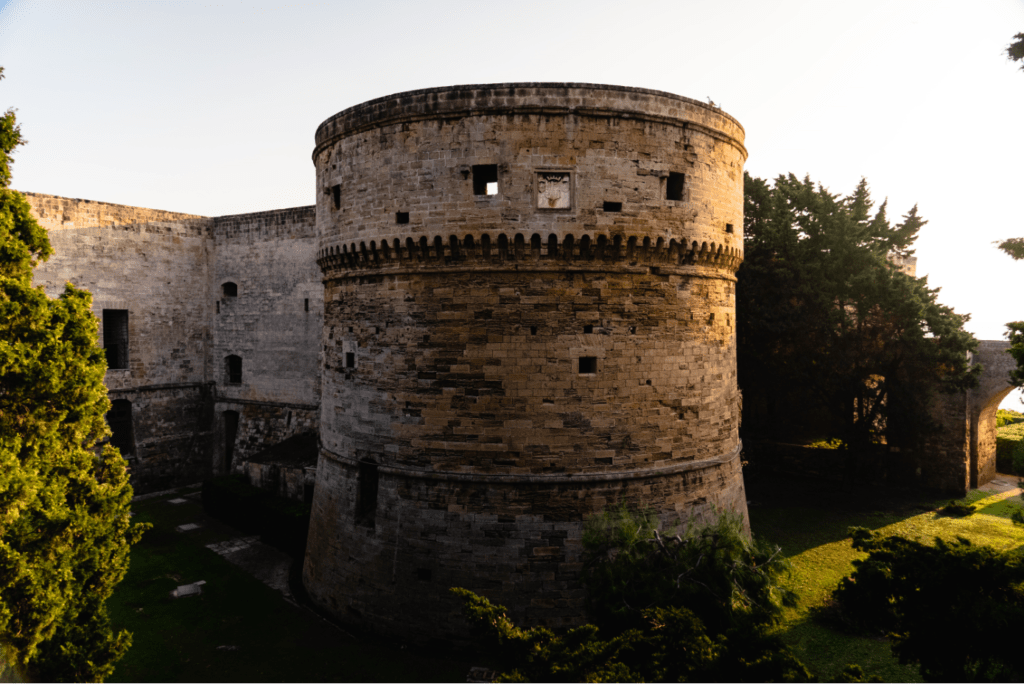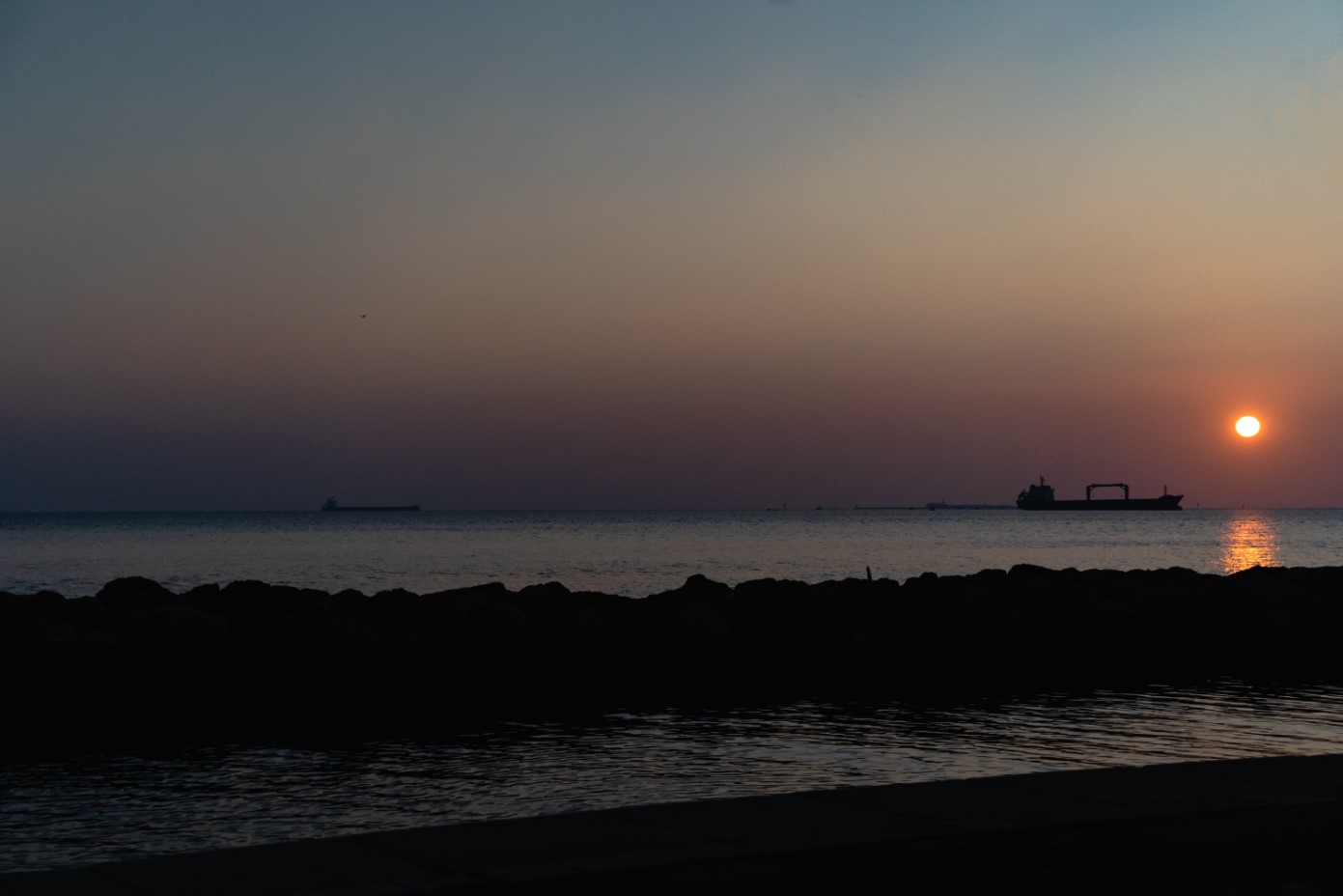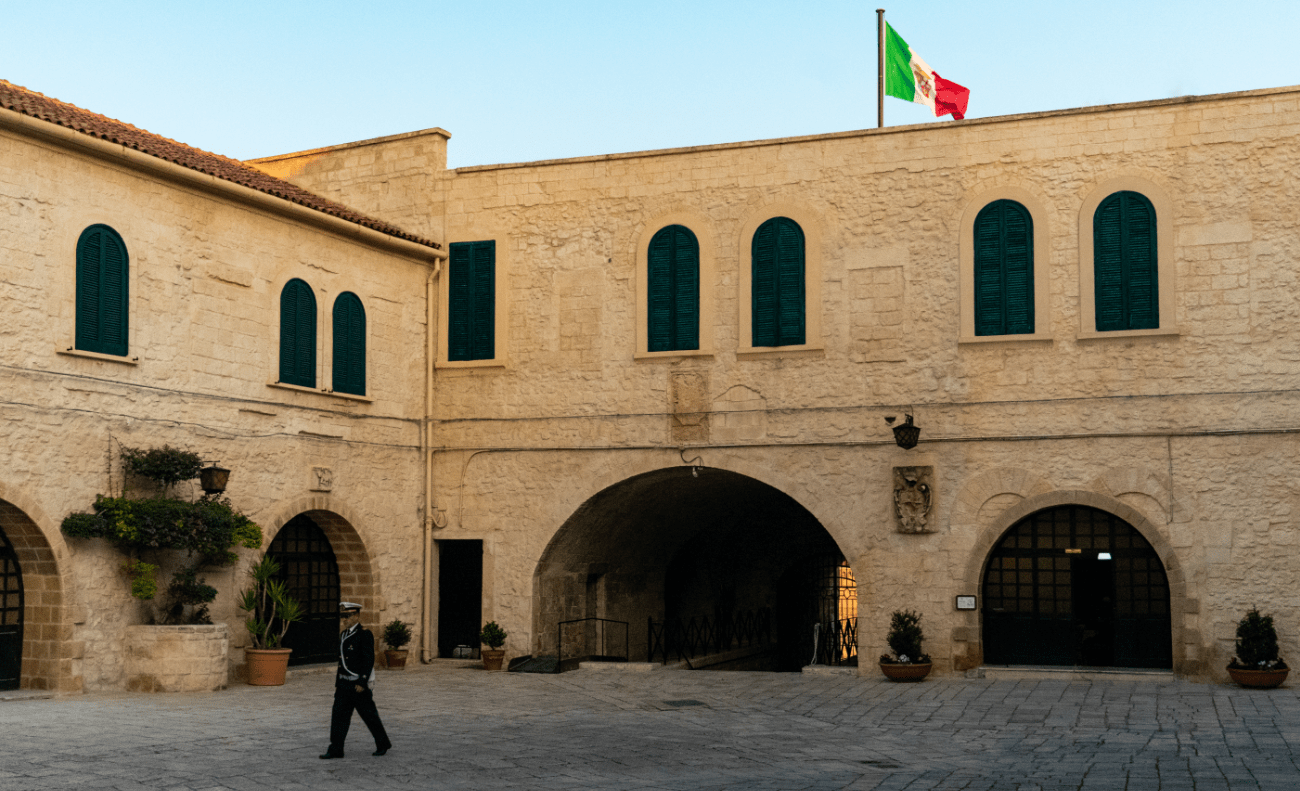The Aragonese Masterpiece
the Castle of Taranto
“Extraordinary historical path”
“A great historical testimony that has come almost intact to us. The location is spectacular. Kept perfectly cared down to the last detail.”
-Some quotes of our tourists
THE NAVY OF TARANTO (WHICH MANAGES THE CASTLE) PROVIDES FREE TRAINED STAFF WHO WILL GUIDE YOU THROUGH THE VISIT TO THE CASTLE AT DIFFERENT TIMES OF THE DAY, UNTIL 03.00 IN THE MORNING.
THE CASTLE OF TARANTO, ALSO KNOWN AS CASTEL S. ANGELO IN ITALIAN, IS LOCATED NEAR AN ANCIENT NATURAL DEPRESSION OF THE ROCK BANK, ABOVE WHICH STANDS THE ANCIENT VILLAGE OF THE CITY.
IT’S AN ARAGONESE RECONSTRUCTION OF A PREVIOUS NORMAN-SWABIAN-ANGEVIN FORTRESS.

The improvement of the artillery in the fifteenth century made the medieval castles obsolete since their thin walls could no longer resist against the cannons of the attackers or allow their use by the defenders. The conquest of Otranto by the Turks in 1480 clearly showed that this type of fortification was now inadequate.
The king of Naples, Ferdinand of Aragon, therefore decided to strengthen the coastal defenses of the realm. In this context, between 1487 and 1492, the Castle of Taranto was rebuilt following the specific project of the great Sienese architect Francesco di Giorgio.
The new castle had a vaguely reminiscent shape of a scorpion with five round towers located at the corners of the building.
The Spaniards, who succeeded the Aragonese in 1502, expanded the summit platforms to facilitate movement and use of the artillery.
They also filled many of the intramural tunnels and the upper casemates of the towers with earth to reinforce them and to obtain artillery positions on the top of the towers.


Precedente
Successivo
The castle, however, has remained substantially intact except for the tower of S. Angelo, demolished in 1883 to make room for the swing bridge. Starting in 2003, the Navy, guard of the castle since 1883, began the systematic restoration of the interior of the fortress with the aim of returning it to the Aragonese configuration and identifying the previous Greek, Byzantine, Norman, Swabian-Angevin structures.
The internal restoration, carried out by the personnel of the Navy, under the supervision of the local Superintendency of Architectural Heritage, essentially consists of the removal of the plaster and concrete to bring to light the original surfaces of walls and floors in the reopening of corridors, rooms and passageways, to restore, moreover, the permeability of the castle and restore the functionality of the various defensive elements.
During these activities, large quantities of earth were excavated. in collaboration with the University of Bari, under the supervision of the Superintendence for Archaeological Heritage, discovering numerous finds from the various periods of almost three thousand years of history that was an exceptional discovery and we are looking forward to discover even more in the next times.
Italy is full of treasures and even after decades we are still discovering new insights and astonishing beauties from the past.
To discover more follow our blog and social media keep in tune with OHH! ITALY.
